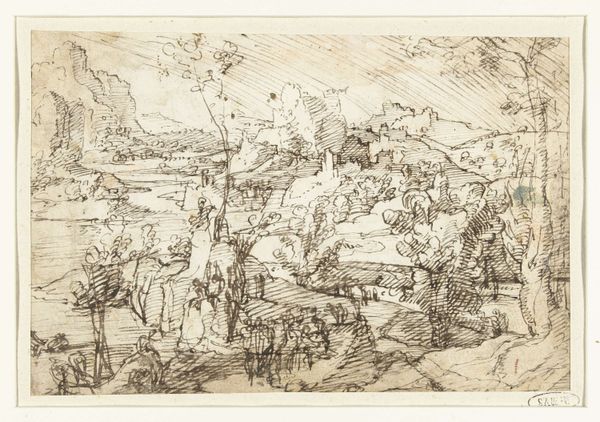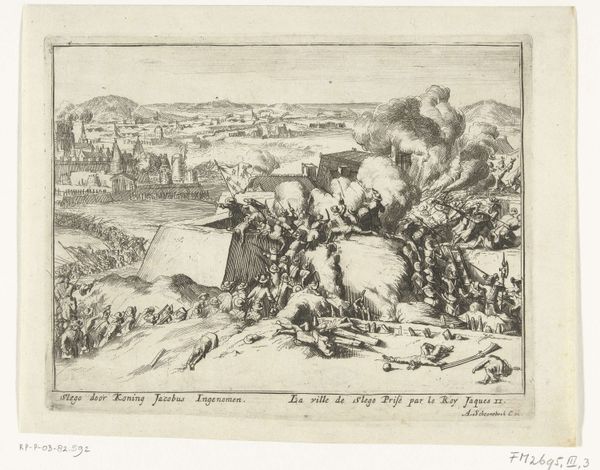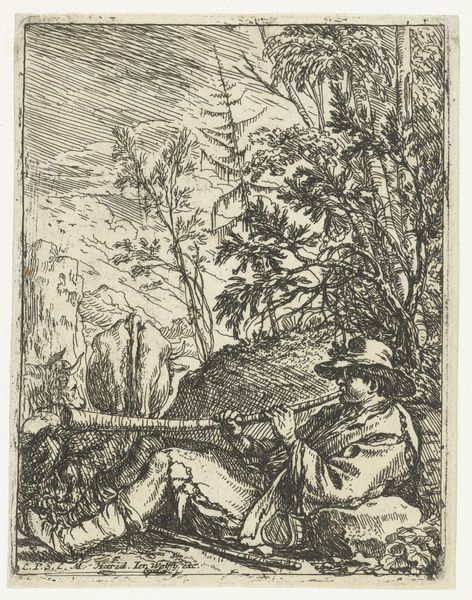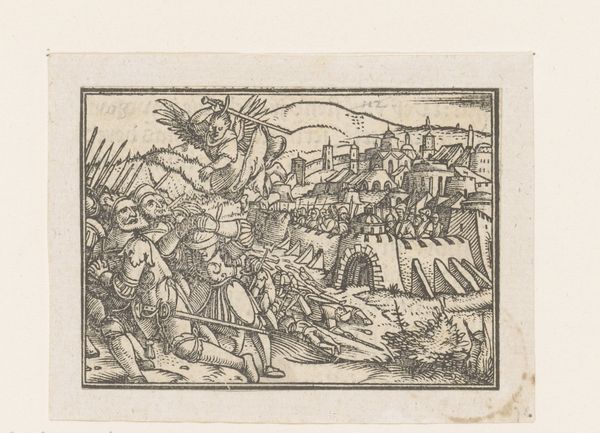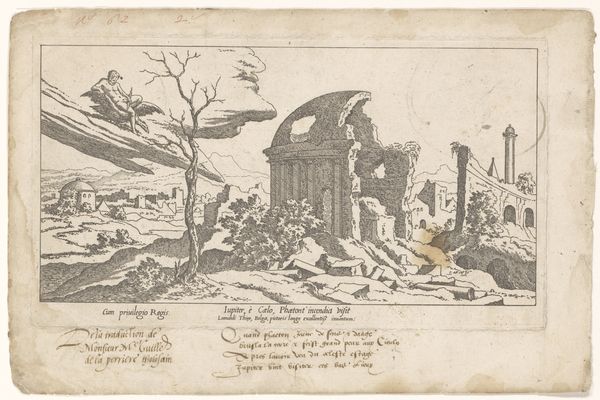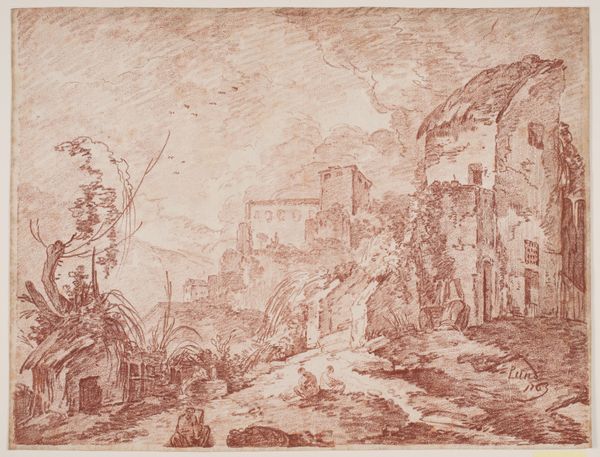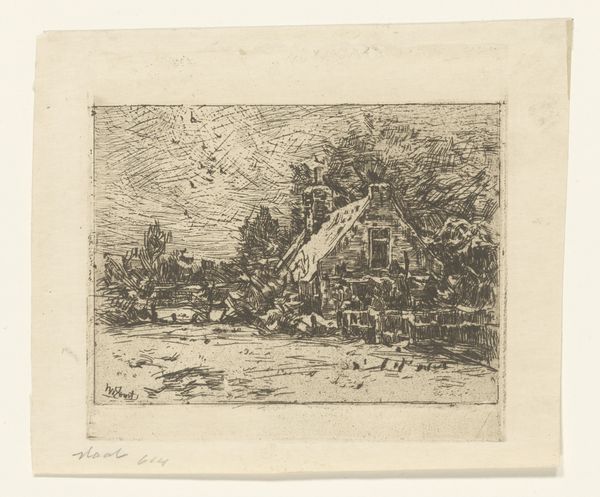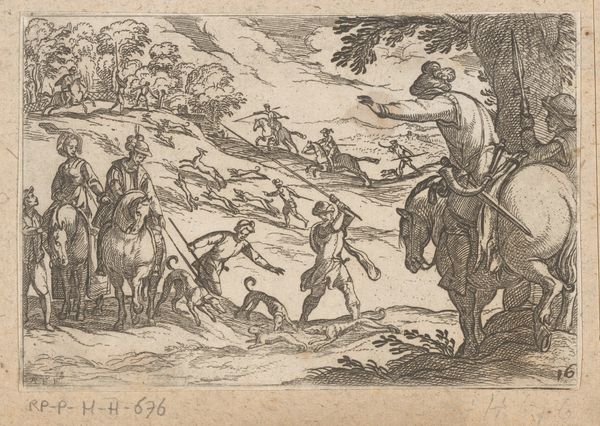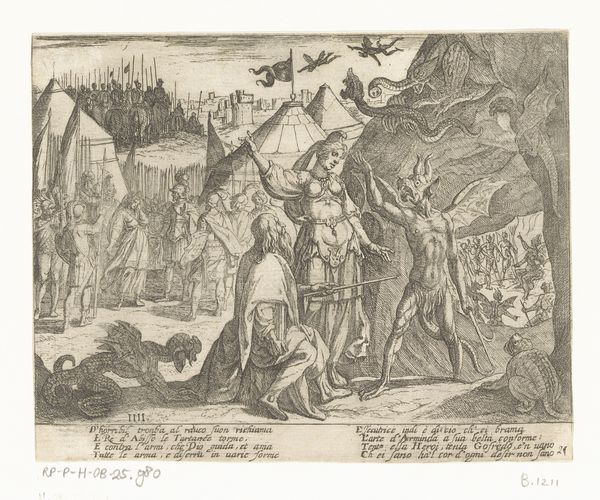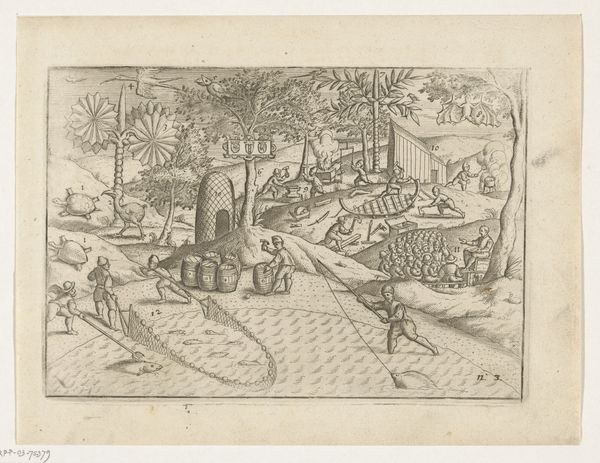
print, engraving
#
narrative-art
# print
#
pen illustration
#
pen sketch
#
old engraving style
#
figuration
#
history-painting
#
northern-renaissance
#
engraving
Dimensions: height 146 mm, width 95 mm
Copyright: Rijks Museum: Open Domain
Editor: So, here we have Georg Lemberger's "Twee passages uit het verhaal van Samson," from 1524, an engraving depicting scenes from the story of Samson. I'm struck by the stark contrast between the frantic battle on the left and Samson's lone figure carrying what looks like massive doors on the right. It feels almost like a commentary on the individual versus the group. What do you make of this juxtaposition? Curator: That's a sharp observation. Think about the cultural context: the Northern Renaissance, with its emphasis on humanism alongside religious themes. This print isn't just illustrating a Bible story, it's participating in a broader conversation about the role of the individual in society. The printing press democratized access to information, challenging established authority. Lemberger presents us with two acts of defiance – Samson’s prayer/plea when his eyes are poked, and carrying away of the doors of Gaza as acts of independence against oppression. Who, then, has control over the representation of such an image? Editor: That’s a great point! So, it’s not just the story itself, but the fact that this story is being reproduced and circulated widely that becomes significant. In a sense, Lemberger is also carrying "the doors" of knowledge, defying control through this accessible medium of engraving. Curator: Precisely. The act of making and disseminating these images can be read as a political act in itself, subtly challenging the power structures of the time. Did this distribution of knowledge affect future political narratives, do you think? Editor: Definitely. It's amazing to think that something that appears to simply illustrate a story could have such far-reaching implications in the public sphere! Curator: Exactly. And it reminds us that art always operates within – and often actively shapes – its social and political landscape.
Comments
No comments
Be the first to comment and join the conversation on the ultimate creative platform.
